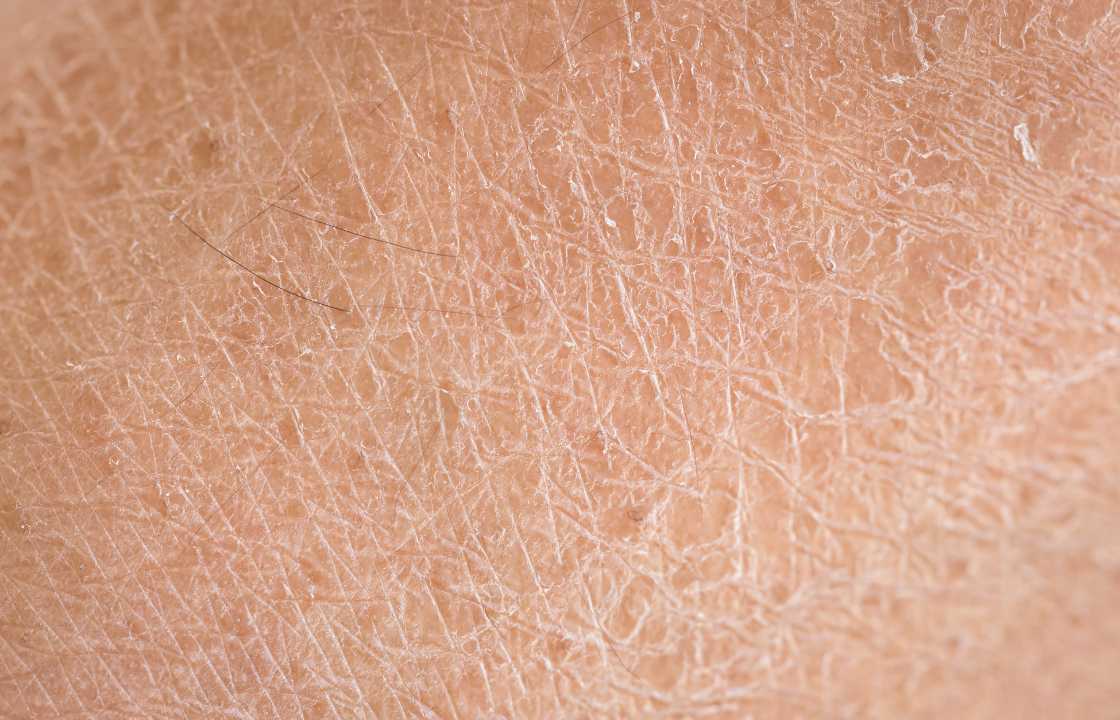Skin Health
Ichthyosis
Ichthyosis, derived from the Greek word for fish, encompasses a group of approximately 20 skin conditions characterized by skin dryness and scaling, leading to a distinct appearance reminiscent of fish scales. The disorder arises from a loss of the skin’s protective barrier, resulting in an inability to retain moisture. Additionally, individuals with ichthyosis often experience an abnormal rate of skin cell production and shedding. This imbalance culminates in the accumulation of thick, scaly skin. While many cases of ichthyosis are mild, the impact on affected individuals can be significant. Although ichthyosis cannot be cured, there are various treatments available to alleviate scaling and improve overall comfort.
Exploring the Diverse Types of Ichthyosis
Ichthyosis manifests in a multitude of forms, with varying degrees of severity. Some types primarily affect the skin’s appearance, resulting in dry and scaly skin. However, others extend beyond the skin’s surface, causing internal issues. Most forms of the disease are exceedingly rare, but two of the most prevalent types are:
1. Ichthyosis Vulgaris: This form affects roughly 1 in every 250 individuals. It typically presents with gray, brown, or white scales that appear in early childhood.
2. X-Linked Recessive Ichthyosis: This condition is relatively rare, afflicting approximately 1 in 6,000 individuals, exclusively males. X-linked recessive ichthyosis is associated with an increased risk of testicular cancer. However, women can be carriers of the gene and may encounter labor difficulties.
The Underlying Causes of Ichthyosis
Ichthyosis arises from genetic factors and is categorized as either inherited or acquired. Inherited ichthyosis is genetically transmitted from parents to their offspring, resulting from specific mutations in genes responsible for skin protection and moisture regulation. These mutations also affect the rate at which the body produces and discards skin cells. Symptoms of inherited ichthyosis usually become apparent in early childhood and can be more severe if both parents carry the responsible gene.
On the other hand, acquired ichthyosis emerges in adulthood. The exact cause of this form is not yet fully understood, but it often co-occurs with other medical conditions, such as an underactive thyroid gland, kidney disease, sarcoidosis (a rare inflammatory disease), cancer (e.g., Hodgkin lymphoma), or HIV infection. Additionally, specific medications, such as hydroxyurea, protease inhibitors (used in HIV treatment), and vemurafenib, may trigger acquired ichthyosis. Nicotinic acid, commonly prescribed for high cholesterol, is another medication that can lead to this condition.
Recognizing the Symptoms of Ichthyosis
Inherited forms of ichthyosis typically manifest at birth or within the first few months of life, with dry and scaly skin being the primary symptom. Scales often appear on specific body regions, including the trunk, stomach, buttocks, legs, face, and scalp. These scales may range in color from white and gray to dark brown and may exhibit thick or thin cracks. Dryness and scaling tend to worsen in cold, dry weather and improve in warmer conditions.
Other common signs and symptoms of ichthyosis include skin redness, blisters, peeling, itchiness, pain, lines on the palms of the hands and soles of the feet, and tight skin that limits mobility. Furthermore, many individuals with ichthyosis also experience eczema, a red, itchy rash.
Potential Complications of Ichthyosis
Skin serves as the body’s protective barrier, preserving moisture and safeguarding against external threats. When ichthyosis causes segments of skin to flake off, this protective layer is compromised, increasing the risk of complications such as:
1. Infections: Vulnerability to infections due to breaches in the skin’s integrity.
2. Dehydration: Diminished moisture retention in the skin, potentially leading to dehydration.
3. Blocked Sweat Glands: Overheating may occur due to obstructed sweat glands.
4. Slow Hair Growth: Scalp scaling can impede hair growth.
5. Increased Caloric Expenditure: The skin’s excessive cell turnover can lead to a higher calorie burn.
6. Emotional Impact: The visible skin changes can affect self-esteem and cause emotional distress.
Additionally, men with ichthyosis are at an increased risk of testicular cancer, undescended or hidden testicles, and low sperm count. Vision loss can result from corneal damage, impacting the cornea, the eye’s clear front layer. Furthermore, ichthyosis can potentially lead to brain and nervous system problems.
Diagnosing Ichthyosis
Ichthyosis can sometimes present as mild, resembling common dry skin. If dryness and scaling cause concern, consulting a dermatologist is advisable for diagnosis and treatment. The diagnostic process may involve:
1. Skin Biopsy: A small skin sample is examined under a microscope to confirm the presence of ichthyosis.
2. Genetic Testing: Saliva may be analyzed to detect gene mutations associated with specific types of ichthyosis.
Treatment Approaches for Ichthyosis
While ichthyosis has no cure, several treatments can effectively manage its symptoms, providing relief to affected individuals. These treatment strategies include:
1. Moisturization: Regular application of creams, lotions, or ointments to the skin can enhance moisture levels. Look for products containing lanolin, alpha hydroxy acids, urea, or propylene glycol. Ceramides or cholesterol-containing products also help retain skin moisture. Applying these products immediately after a shower or bath, when the skin is still damp, can maximize their effectiveness.
2. Bathing Techniques: Bathing in salt water and using a pumice stone to gently rub the skin can help exfoliate and hydrate the skin. Additionally, products containing salicylic acid, glycolic acid, or lactic acid can aid in the removal of dead skin.
3. Oral Retinoid Medications: In cases of severe ichthyosis, dermatologists may prescribe oral retinoids like acitretin or isotretinoin. These medications can effectively manage symptoms but may come with potential side effects, such as weakened bones, dry mouth, and gastrointestinal discomfort.
In conclusion, ichthyosis, though not life-threatening, significantly impacts the lives of those affected. Its diverse forms and potential complications underscore the importance of early diagnosis and appropriate management. Advances in research and medical treatments continue to offer hope for enhanced therapeutic options and a better quality of life for individuals living with ichthyosis. Additionally, the emotional and psychological well-being of those with ichthyosis is a crucial aspect of their overall care, highlighting the importance of addressing any associated mental health concerns.

